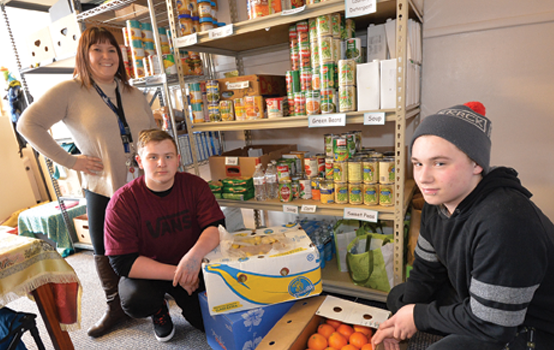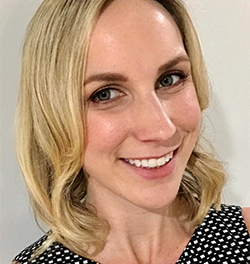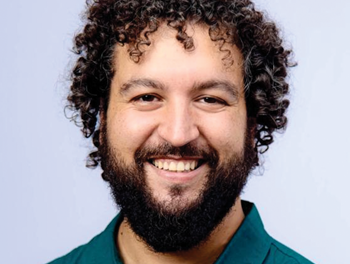Moving from a traditional school district to one that embraces a community schools model requires fundamental shifts in organizational structure and practices.
It makes sense: If schools can make sure students are healthy, well-nourished, and live in safe neighborhoods, then they’ll be ready to learn and able to achieve.
Sounds so simple, right?
But most school districts are not in the food bank business, they don’t operate health clinics, and they aren’t experts at neighborhood revitalization.
However, school districts are increasingly stepping up to the challenge of taking a whole-child approach to learning by embracing a community schools model in which public schools are the hubs of their neighborhoods — places where families, educators, and community partners come together to provide all students with quality instruction, opportunities for enrichment, and access to health and social services.
 Transforming themselves from a traditional school district to this new model requires fundamental shifts in organizational structure and practices within the school district. But it also requires that the entire community is committed to a shared vision and a desire to put “us” and “ours” before “me” and “mine.”
Transforming themselves from a traditional school district to this new model requires fundamental shifts in organizational structure and practices within the school district. But it also requires that the entire community is committed to a shared vision and a desire to put “us” and “ours” before “me” and “mine.”
District leaders who have done this work say it is not an overnight fix but a process that takes time. Although each district’s model may be unique, the district transformation process is not.
#1. Let data lead the change.
Vancouver Public Schools (VPS) in Vancouver, Wash., adopted a community schools initiative as part of its strategic plan 10 years ago. Vancouver is a suburban community facing rapid urbanization. In the past decade, the number of students qualifying for free and reduced-price meals increased from 39% to a peak of 57%; last year, 80% of students in the core urban schools were eligible. At the same time, the English language learner population has doubled, and affordable housing has not kept up with population growth overall; roughly 1,100 of the district’s 24,000 children were homeless at one point last year.
Looking at the trends and the data, Vancouver Supt. Steve Webb said the school system clearly needed to change. “Our school board and district leadership team recognized that poverty is not a learning disability, but poverty can make it more difficult for students to experience success in school and become future-ready graduates,” he said.
District leaders also have to convince their own staffs that shifting to community schools is a smart idea.
Citing the correlation between student achievement and poverty, VPS began to work with community leaders and local funders to transform schools into hubs of their neighborhoods. In 1999, the district established its first Community Learning Center that served as a preK-5 elementary school and offered wraparound community school supports.
Through a strategic planning process, the district and community partners identified an Opportunity Zone comprising schools with the highest concentrations of poverty, and ultimately they established 18 Family-Community Resource Centers (FCRC) in those schools and a mobile FCRC to serve all other district schools (with plans to add an additional FCRC by 2020).
In Evansville, Ind., the approach was similar. The Evansville Vanderburgh School Corporation’s (EVSC) community school journey began more than 20 years ago in response to a local United Way report. That report lifted up the need for a one-stop shop of community partners and resources to help and support families facing the conditions and consequences of poverty. The United Way partnered with Cedar Hall Elementary School to launch that initiative.
“We didn’t set out to create a community school model. We just wanted to bring in a few partners at one school to meet the basic needs of students and families,” said Cathlin Gray, who was principal of Cedar Hall at the time and is now associate superintendent for family, school, and community partnerships. “As we started doing that, it just seemed to grow from there, with more and more partners coming to the table. Eventually, we found other schools across the nation doing this same work, and we realized it had a name. We were creating a community school.”
Over time, EVSC saw the value of bringing community supports into the school, and the initiative grew to include all 39 schools in the district.
In both Vancouver and Evansville, compelling data about the needs of students and families drove the decision to adopt the community school approach. And, both districts started small — in just one school. The success of that single school helped tell the story that allowed the work to expand across each district.
#2. Involve the community as a real partner in the initiative.
In Vancouver, the district had a vision and strong leadership to guide the community schools initiative but had to introduce the idea and gain the support of the broader community. That meant engaging stakeholders through planning meetings, focus groups, surveys, and other methods. “To build a shared understanding, we provided information about community schools work that already was happening at some sites in our district and work that was happening in other parts of the country,” Webb said.
The district also reached out to the Institute for Educational Leadership’s Coalition for Community Schools and brought in then-president Marty Blank to help make the case for adopting a districtwide community schools approach. “The most important aspects of the process were getting the right people on the bus, thought leaders who would be champions for community schools, and facilitating a planning process that generated a collective vision and strong sense of ownership and enthusiasm within our community,” Webb said.
That enthusiasm and ownership has been infectious. The number of partners providing ongoing support inside VPS has grown to 141. The number is higher if onetime partnerships are included.
EVSC took a similar approach. The district involved the community at every step, from mapping the community’s needs, identifying gaps between needs and access to services, creating an asset map, and developing partnerships to fill the gaps.
The district followed a community development model detailed in Building Communities from the Inside Out by John Kretzmann and John McKnight (ACTA, 1993). “This book became our road map, and it helped us create shared ownership, but it also helped us create shared accountability,” Gray said. “We reached out to other communities doing this work and, in some instances, brought them in to speak to the partners at the table. Once we found out there was a wheel out there, we did not want to reinvent it.”
The Lampion Center, a local agency that provides counseling and social work services for EVSC students, also joined that asset-mapping process. Executive Director Lynn Kyle said involving partners in the creation of the community school gave them a true understanding of the scope of the work. It allowed them to see not only the needs of the students and families but also the infectious energy and leadership in the school community.
The result of that process has been deep and enduring. “The secret sauce has been and continues to be composed of passion, leadership, commitment to excellence, honest communication, and valued relationships — like the strong relationship still shared with Dr. Gray,” said Kyle. “Lampion Center holds EVSC very close to our heart. We always have our eyes open for ways to further our partnership and our impact with the children and families that together we serve.”
Eventually, Evansville created the School Community Council (SCC), a collaborative council that guides the work of partners and schools from the district level. There are now more than 70 community partners working inside the EVSC schools.
#3. Show schools how they can benefit from this work.
District leaders also have to convince their own staffs that shifting to community schools is a smart idea. Often, much of that convincing surrounds funding positions in the schools.
Early on, Vancouver created Family-Community Resource Center (FCRC) coordinators in 18 schools and funded each position at $55,000 per year. Overall, VPS spends about $1.7 million a year of its own resources on the community schools initiative, and community partners provide another $3.8 million in funds and in-kind support.
“My colleagues and I recognized right away that the district’s investment in FCRC coordinators would allow us to spend less time managing family crises and more time providing instructional leadership,” said Patrick Conners, principal of Chinook Elementary School.
In Evansville, district staff intentionally worked with principals to ensure that they could embrace and lead the community schools work. District staff met regularly with principals to involve them in the School Community Council and created opportunities where they could network with colleagues at community school conferences and gatherings to ask questions and work on solutions to shared problems.
Evansville also created community and family outreach coordinator and site coordinator positions. In its 20 years, Evansville has secured a variety of external grants to fund the coordinator positions and the community school work. When external funding has decreased, schools have used Title I dollars to pick up all or part of the difference. In one school, teachers lobbied the principal to keep the community school position instead of funding another classroom aide because they saw how valuable it was to have community support for their students and their classroom projects. Part of the coordinators’ work has been tracking the dollar value of in-kind programs and services they were able to bring into the school, an effort that helped emphasize the widespread support for the community school model and the value the positions bring to the school.
Even schools that do not have site coordinators — only one-third of Evansville schools have such positions — have embraced the vision by tapping other staff to do the work. In some schools, social workers coordinate partners; in others, the principal, a counselor, a media aide, or even an external partner does the work. “Sometimes it’s less about staffing and more about creating an atmosphere at the district and school level that community partnerships are not just OK but encouraged. Once partnerships begin to happen, the model sort of sells itself,” Gray said.
#4. Don’t just build the system and walk away.
Building relationships and connections takes time and, according to Webb, it shouldn’t be rushed. “We committed to ‘go slow to go fast,’ expanding by only a few schools a year,” Webb said. That approach ensured that the community schools initiative, positions, and partnerships would be sustainable.
To start, both Vancouver and Evansville created district-level positions devoted to growing and supporting community schools.
VPS has a task force leader responsible for implementing and overseeing its strategic goal of integrating family and community engagement and wraparound services. This person plans and monitors the work, ensures that community school efforts are embedded in school and district improvement plans, and oversees the work of the director of family engagement and FCRCs. The director heads a team of 25 staff at the district and school level, and this team also works with the VPS director of public engagement to hold districtwide events and outreach to key stakeholders.
EVSC created the position of associate superintendent of family, school, and community partnerships to help build its community schools infrastructure. This position oversees an executive director of community schools and family engagement as well as all areas of the EVSC that support learning, including health and wellness staff, after-school and extended day, family engagement, and, of course, community partnerships. EVSC’s infrastructure for supporting the work at the district level now includes more than 25 staff members. One-third of Evansville’s 39 schools have dedicated community school coordinators.
Assigning district staff to support the community schools transformation is important. But it’s also about getting the right people in the right places, and that may mean hiring noneducators for some jobs. “The expertise, background, and skill set required to coordinate partnerships is not necessarily the expertise, background, and skill set of an educator,” Gray said.
A few years ago, for example, Gray went outside the district to hire someone with experience in journalism when she realized communication was becoming more and more of a barrier to the work. When one EVSC school needed to grow its community outreach and organizing capabilities, the principal hired a successful beautician who had no education experience but did have a talent for building connections with people in the neighborhood. She also brought with her a positive outlook, solid organizational skills, and the experience of working independently.
In its journey, VPS also was intentional about hiring. For example, when high mobility rates were flagged as a concern in one school, the district sought a coordinator with expertise in public housing.
As Gray said, “In many instances, the school stuff can be taught, but the respect for families, the belief in the work, the communication skills, and the ability to bring people together are essential skills that can’t necessarily be taught.”
#5. Develop policies, procedures, and data that are consistent and support collaboration.
Adopting a new mind-set, creating positions, and throwing open the doors to community partners is one thing, but welcoming partners into a school is another. For a successful transformation to occur, a district must have strong policies and formal procedures that support collaboration and partnerships.
Districts say including community schools in the formal district strategic plan is an essential start. Seeing the words in writing helps articulate and sell the vision, especially in the beginning.
Beyond the strategic plan, both districts developed systems for approving written memoranda of understanding (MOU) or memoranda of agreement (MOA) with partners. These documents spell out how community partners and schools will communicate and work together to support students and families. In many instances, the school board and the boards of the community partners must approve these agreements.
Transforming themselves from a traditional school district to this new model requires fundamental shifts in organizational structure and practices within the school district.
VPS also has created formal agreements to share data. These agreements ensure that both the district and the community partner are focusing on the same outcomes for student success and can work together to solve problems. Recently, through a data-sharing agreement, the district worked with the Vancouver Housing Authority (VHA) to identify students who were chronically tardy and lived in a VHA property. VHA now runs a van that picks up students who miss the bus and takes them to school, and the school has changed its late-arrival process to allow those students to head straight to class. “It’s a fairly new strategy,” said Tamara Shoup, VPS’s director of family engagement and FCRCs. “But we look forward to tracking the impact of this simple solution while we work on parent outreach about attendance.”
In Evansville, the School Community Council evaluation team meets monthly to unpack data from community partners, programs, and schools. The team, which includes partners, school staff, and the deputy superintendent for student support and accountability, brainstorms and ask questions to deepen their thinking around these data and improve programs and support.
EVSC also created a data warehouse, which also serves community partners when they need information to support programming, staffing, and grant writing.
Along with agreements, district leaders say that creating opportunities to share successes with partners and with the community is also important. “We want our internal and external stakeholders to understand why we have community schools and how partnerships are cultivating hope, opportunity, and agency,” said VPS Chief of Staff Tom Hagley, who led the FCRC task force for its first six years. The district routinely shares successes and highlights community partners at meetings with key stakeholders, in publications, and at community forums and conferences. Vancouver also assists other districts countywide and throughout the Pacific Northwest region in scaling up their own community schools initiatives.
#6. Be both formal and flexible.
While it’s important to have policies and procedures to support the work, both districts say when it comes to transformation, flexibility is also essential.
“Community schools are all about responding to needs, but needs change so we must be nimble enough to meet these changing needs,” Smith said. Every few years, the EVSC community school staff members go on a listening tour with partners, parents, and schools to hear and see what’s working, what’s not, and what else is needed for success.
During a listening tour five years ago, nearly every EVSC school described the need for mental health services for students. That led the district to develop a mental health collaborative to help grow mental health supports.
At the school level, partnerships come and go based on changing needs. Not all of the EVSC’s community schools look the same. Each school has a unique set of partnerships designed to meet its needs.
Leaders come and go, too, forcing partnerships to adjust and adapt. But as the work became part of the district fabric, leadership changes became easier and transitions much more smooth. “We deal with leadership changes by not making the community schools initiative dependent on one person or even a small group of people. Instead, we are embedding this work into the culture of our organization and community,” Hagley said.
“We have principals who are not familiar with the term ‘community schools’,” Gray said. “They just know they inherited partners who support students and families in their buildings. It’s just part of their school and part of the work they support.”
Leadership changes with partners can present challenges too, and community school leaders have an informal approach to dealing with leadership changes. “We call it ‘going for coffee’,” Gray said. “When a new leader comes on board, we reach out to our new partners to get to know them, not just as leaders of their organizations but as people. Those coffee dates don’t feel like work, but they are crucial to building and nurturing relationships with partners.”
“The work is not linear so change is continuous,” Shoup said. “As a director, you always will be creating, managing, monitoring, aspiring and inspiring, navigating and celebrating, assessing and retooling. It is what makes me enjoy coming to work every day.”
#7. How you think about resources may determine your ability to sustain this initiative.
Through the years, the EVSC has been able to blend and braid general fund dollars with both public and private grant dollars to sustain the staff lines related to its community schools, and VPS also provides funding for support personnel. Both districts say it’s critically important to ensure that these positions are stable, which sends a message of commitment to the rest of the district and allows staff in these positions to settle in and spend time setting a course and creating a foundation of relationships that support the work.
In both the VPS and EVSC, district staff and community partners collaborate to write grant proposals. This ensure that the partners’ work aligns with what’s needed in schools and that schools understand the expertise and support the partners can provide. Sometimes the district applies for a grant and receives funding, sometimes it’s a partner, but the resources are blended to support the programs and services. “We have one partner that provides social work services in some of our community schools. Some years, the EVSC has grant funding and can pick up a greater portion of the social worker salaries, sometimes the partner has a grant and can fund the majority of the cost. The key is having the conversations and staying committed to the work,” Gray said.
Another key, say the district leaders, is that grants are written to support the community schools vision and meet the needs of students and families. “In other words, it’s not about the grant. Grants provide the capacity and resources to do the work, but the work is always about more than just meeting the goals spelled out in a grant,” Gray said.
It’s a journey
VPS and EVSC recommend that districts and schools take all the lessons learned, the advice and the principles, and use them as loose guidelines to build a system that meets the unique needs of their communities, their students, and their families.
Building a system — and transforming schools — is a challenge, and the work is never done. District leaders said it’s not necessarily the results that keep them going at this work but a higher purpose. “Within our school system and community, an ever-growing number of people recognize that we have a moral imperative to help all children achieve their full potential, regardless of their background and individual circumstances,” Webb said. “Some people question whether the proper role of a school district is to provide wraparound support for children, families, and the broader community. If not us, then who?”
“In the end,” Smith said, “once you know differently, you have to do differently.”
Learn more
More information on the community schools initiatives is available on the districts’ web sites.
Evansville: http://evscschools.com
Vancouver: http://vansd.org/fcrc
Originally published in February 2018 Phi Delta Kappan 99 (5), 25-30. © 2018 Phi Delta Kappa International. All rights reserved.
ABOUT THE AUTHOR

Patricia Weinzapfel
PATRICIA WEINZAPFEL is executive director of community schools and family engagement, Evansville Vanderburgh School Corporation, Evansville, Ind.










